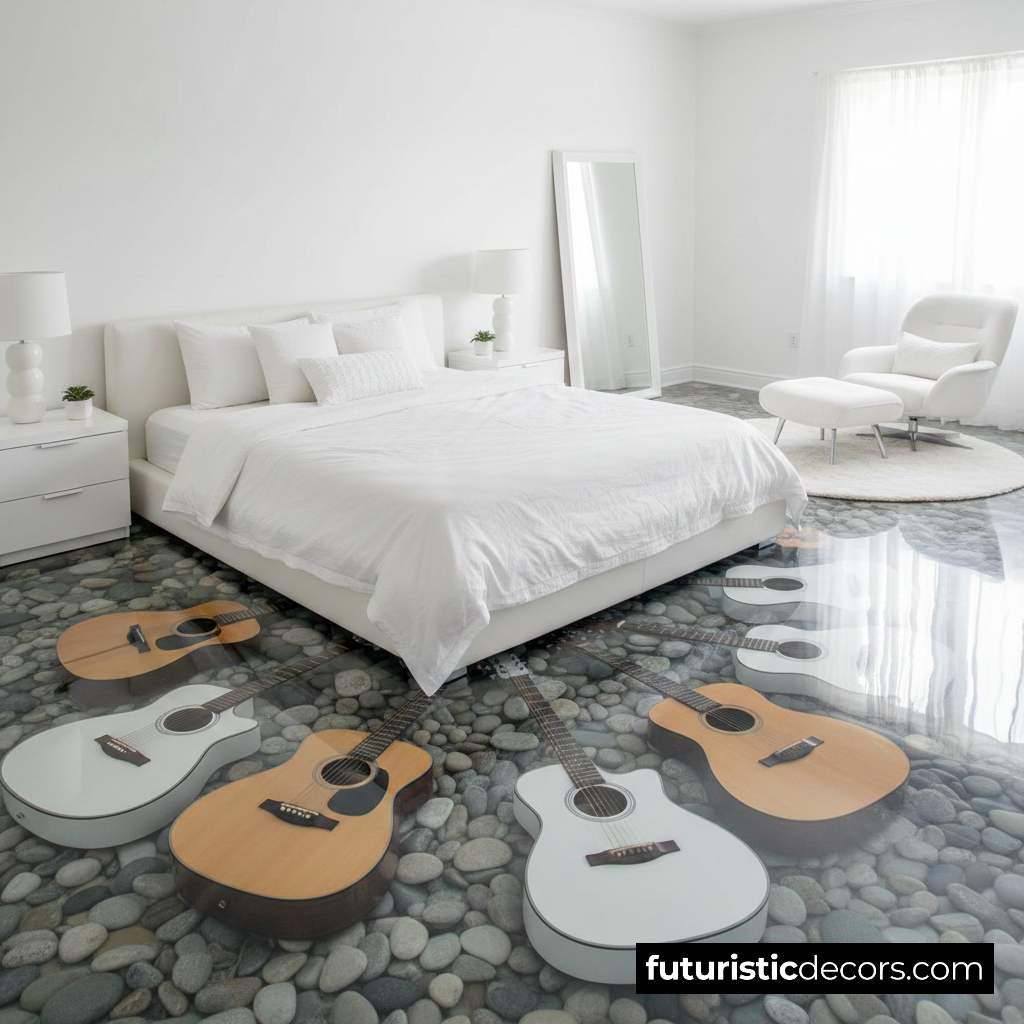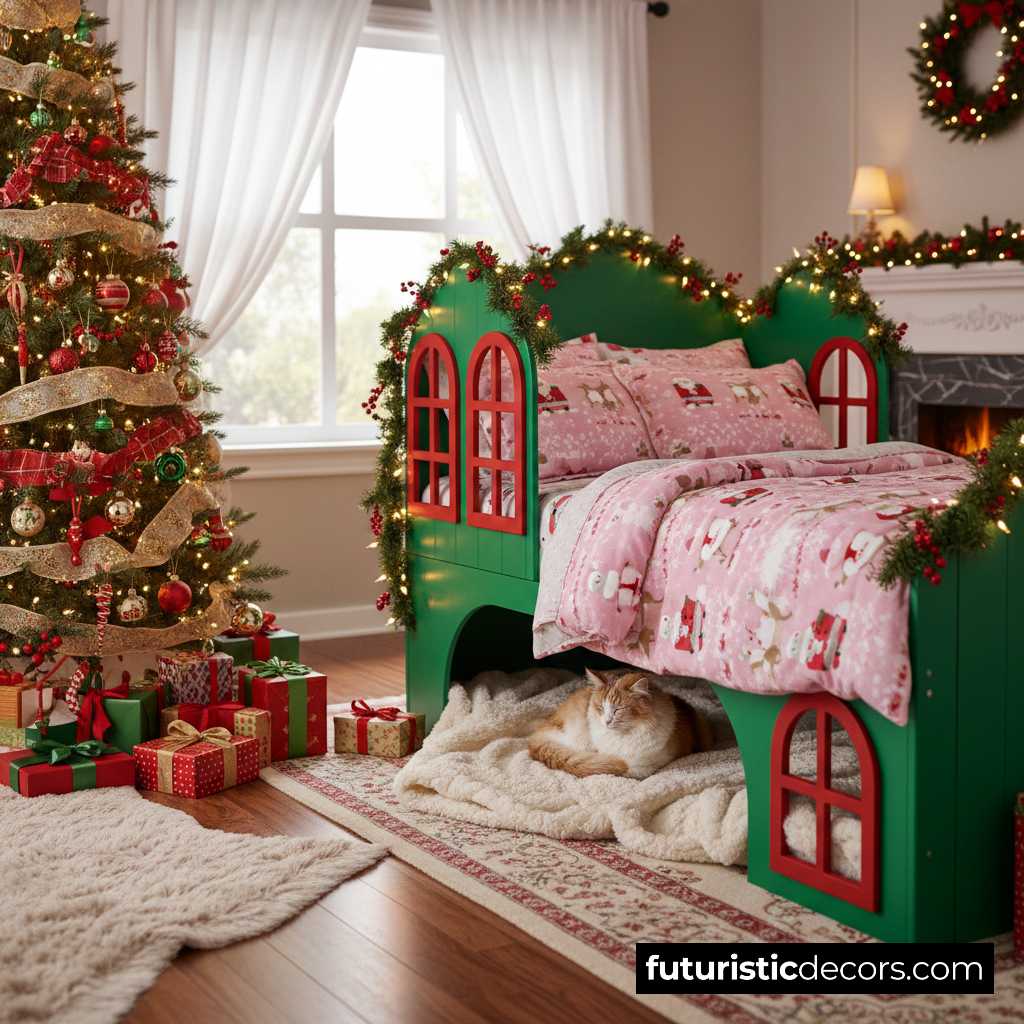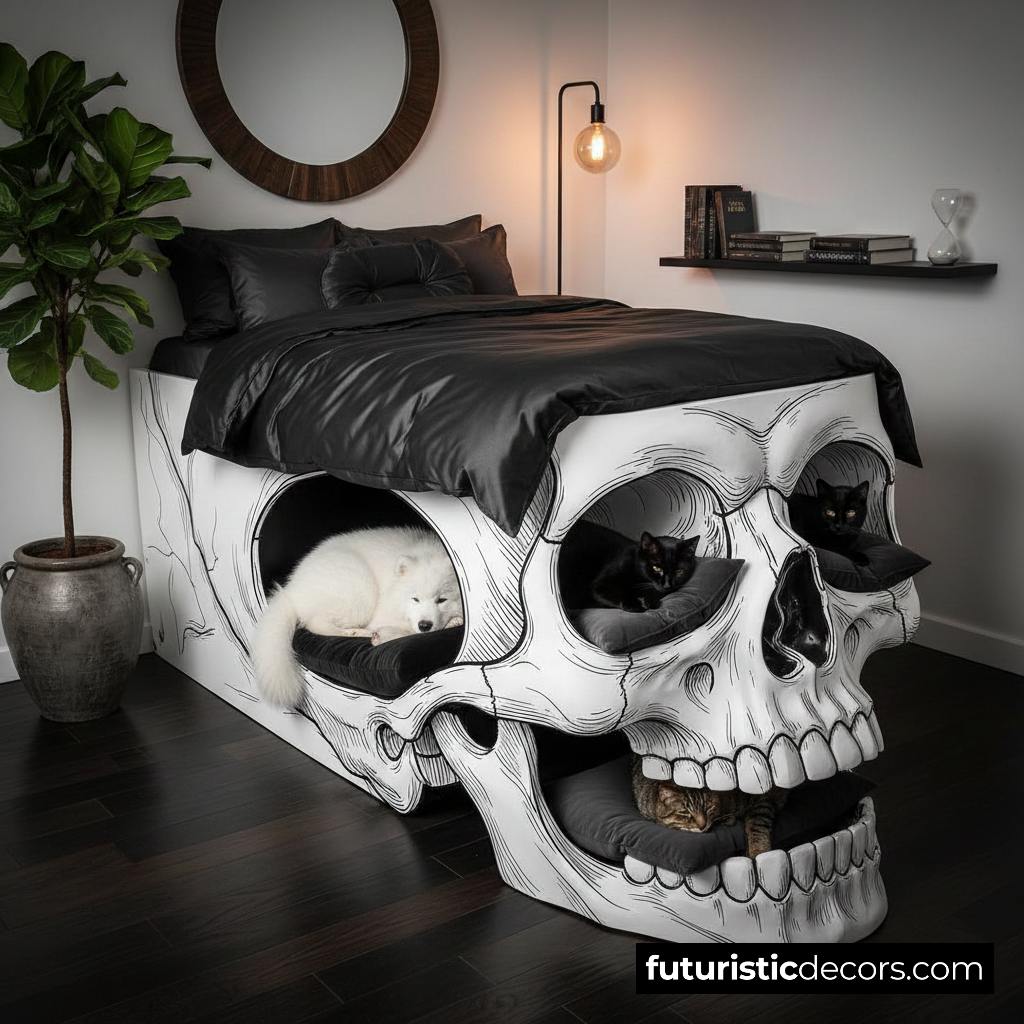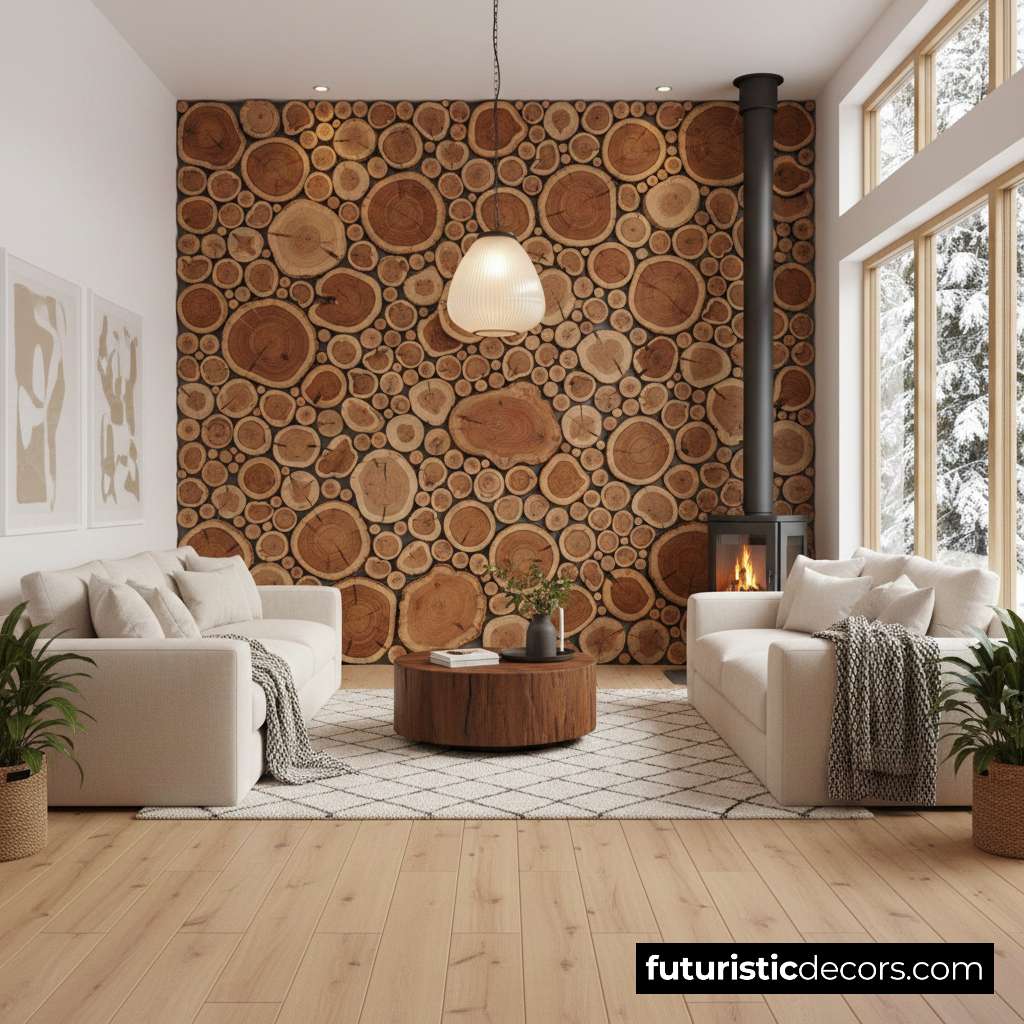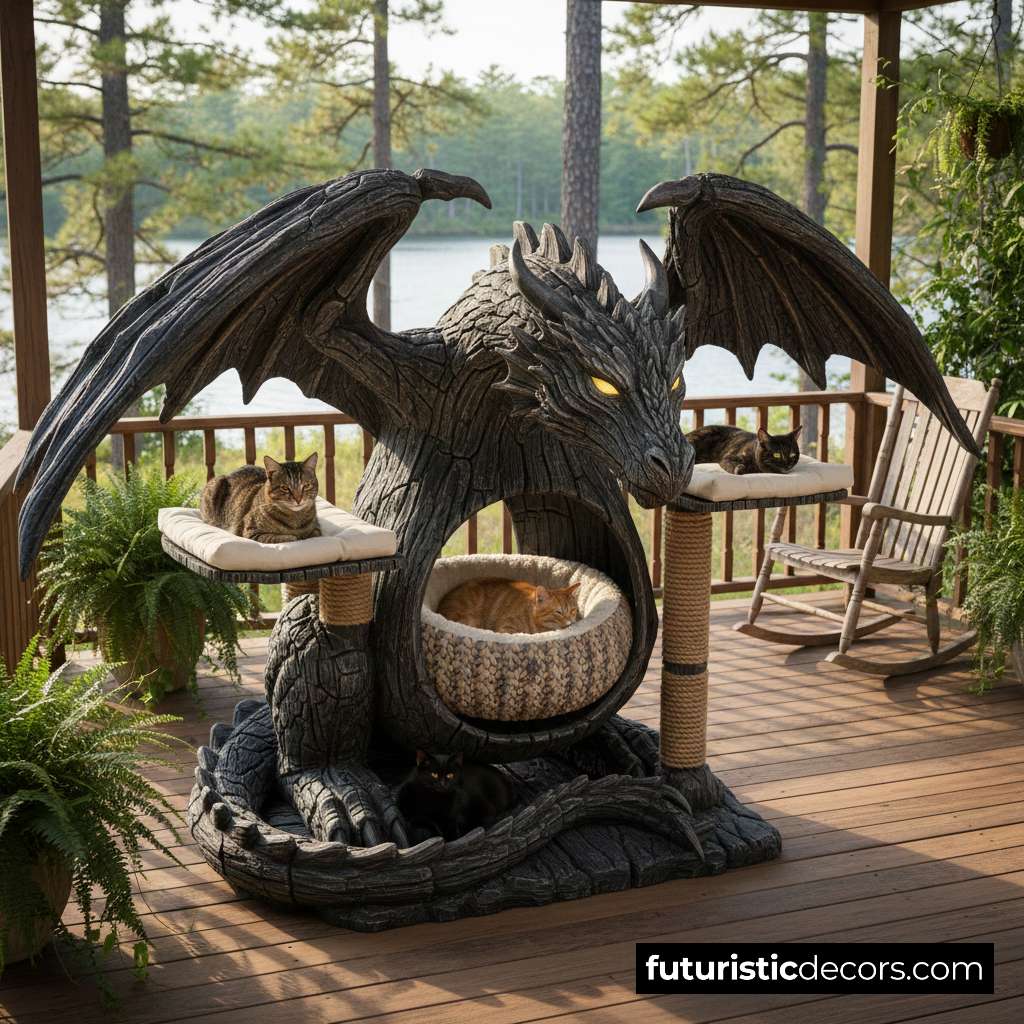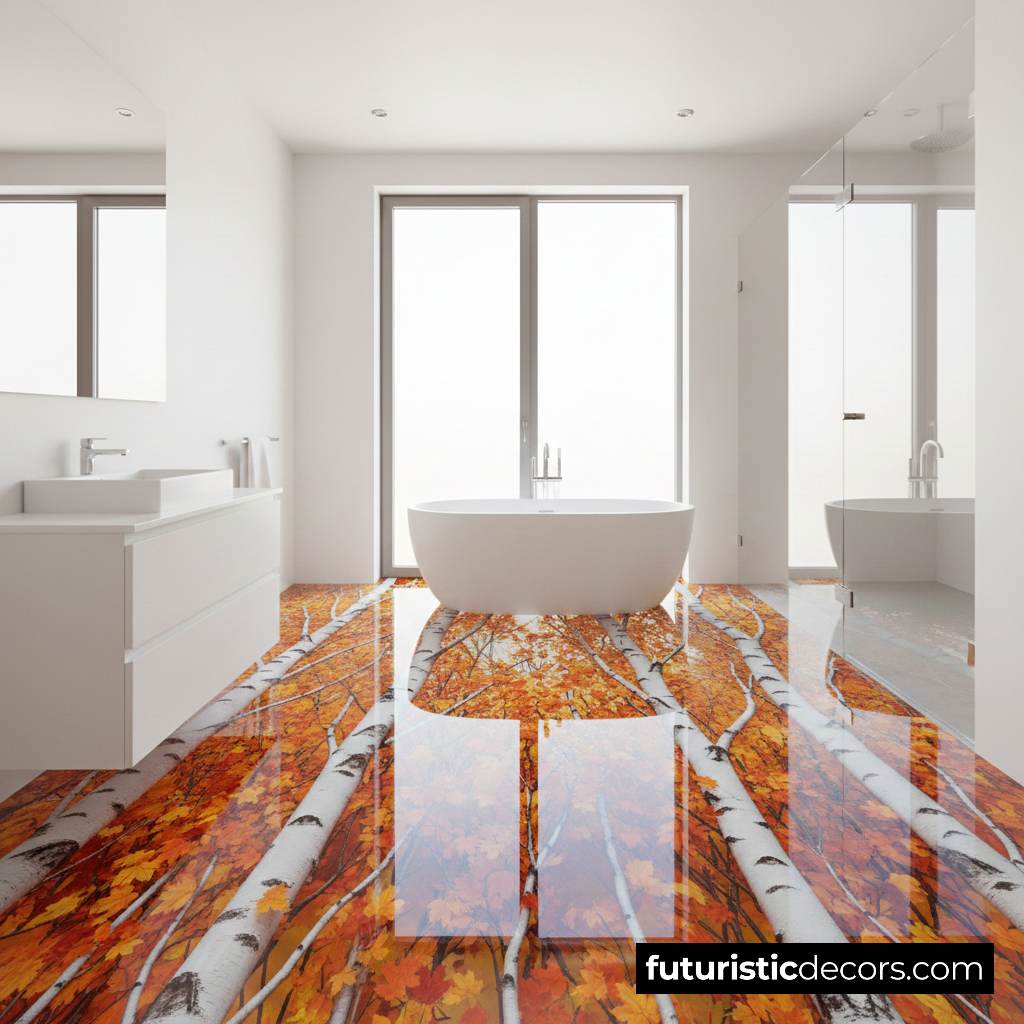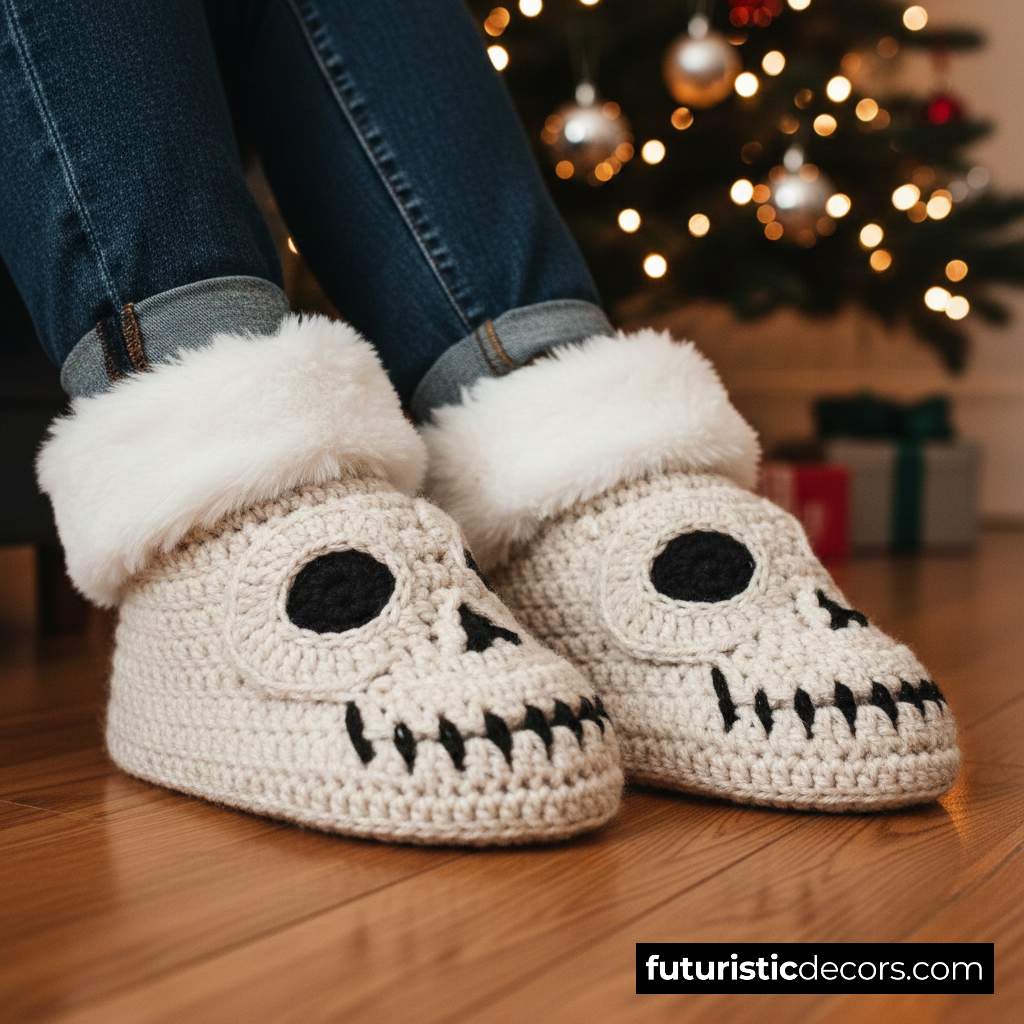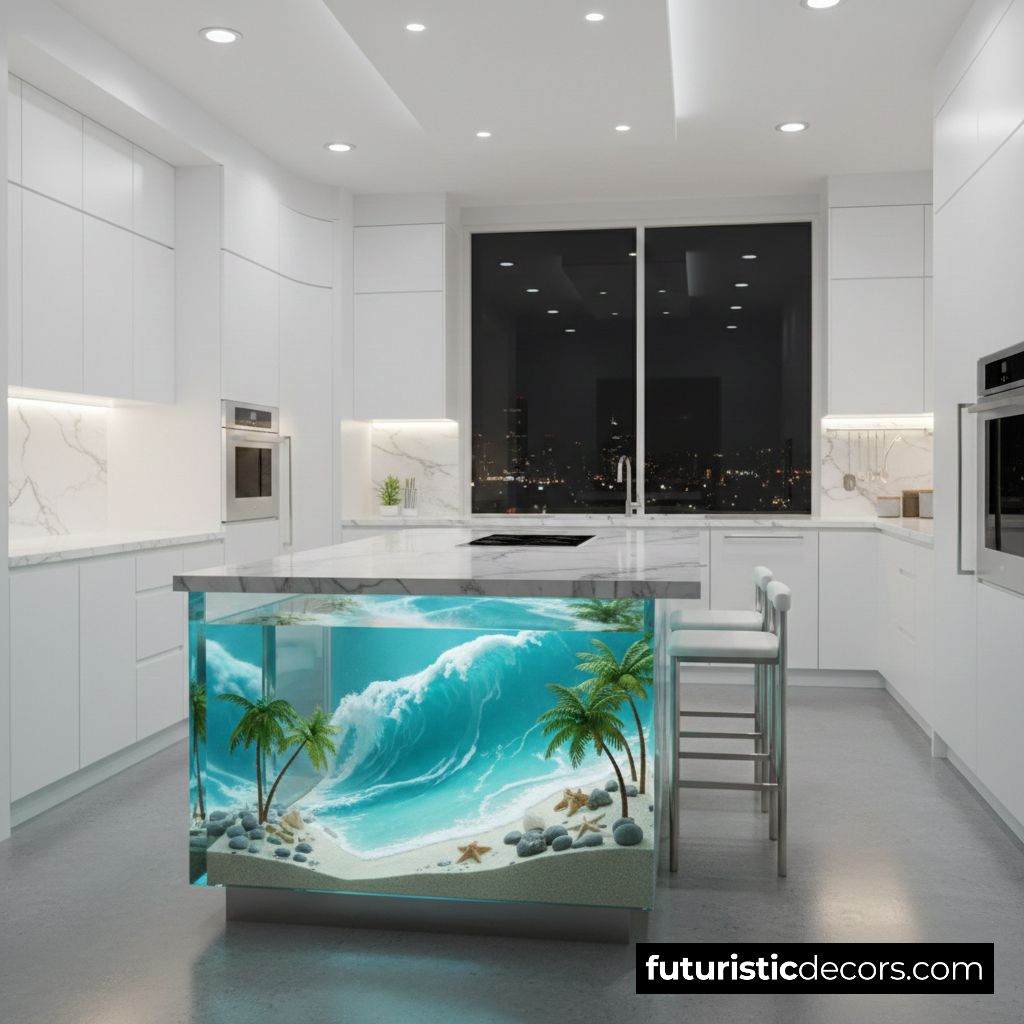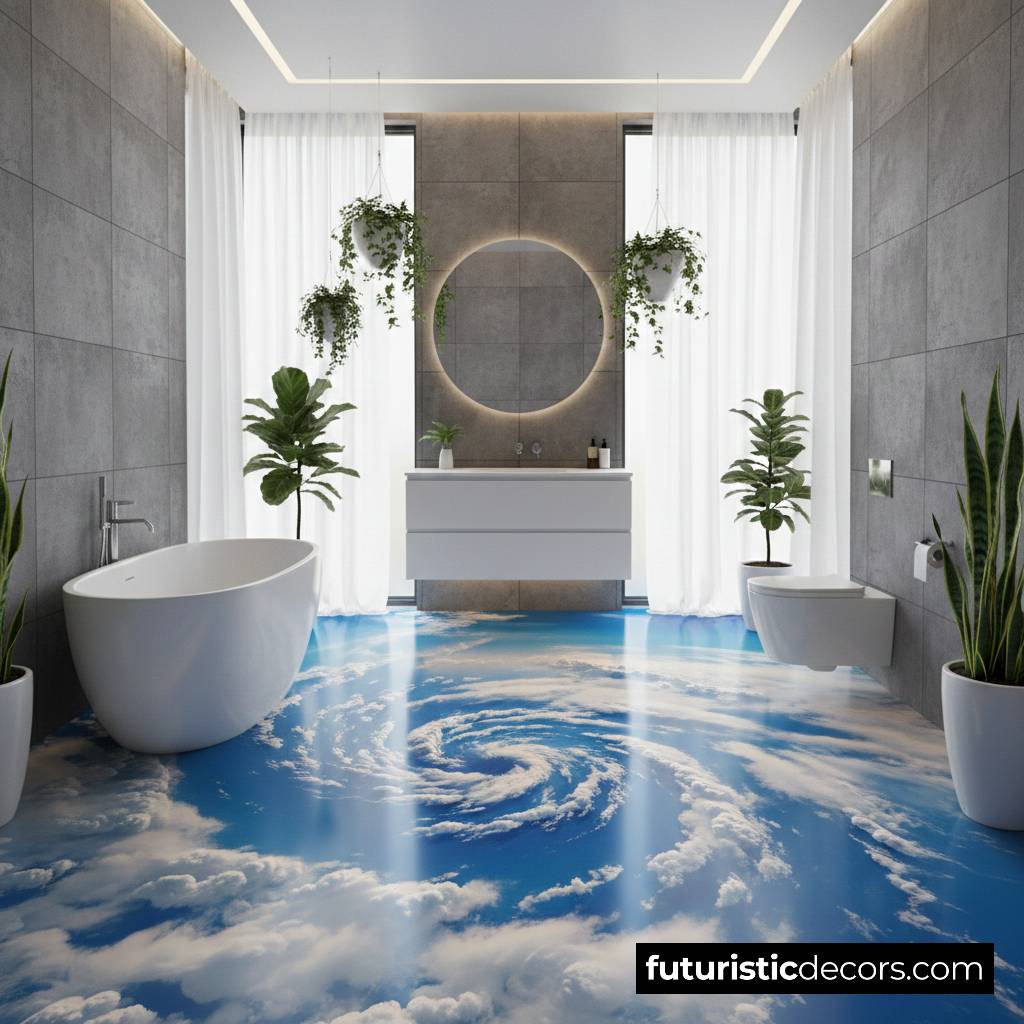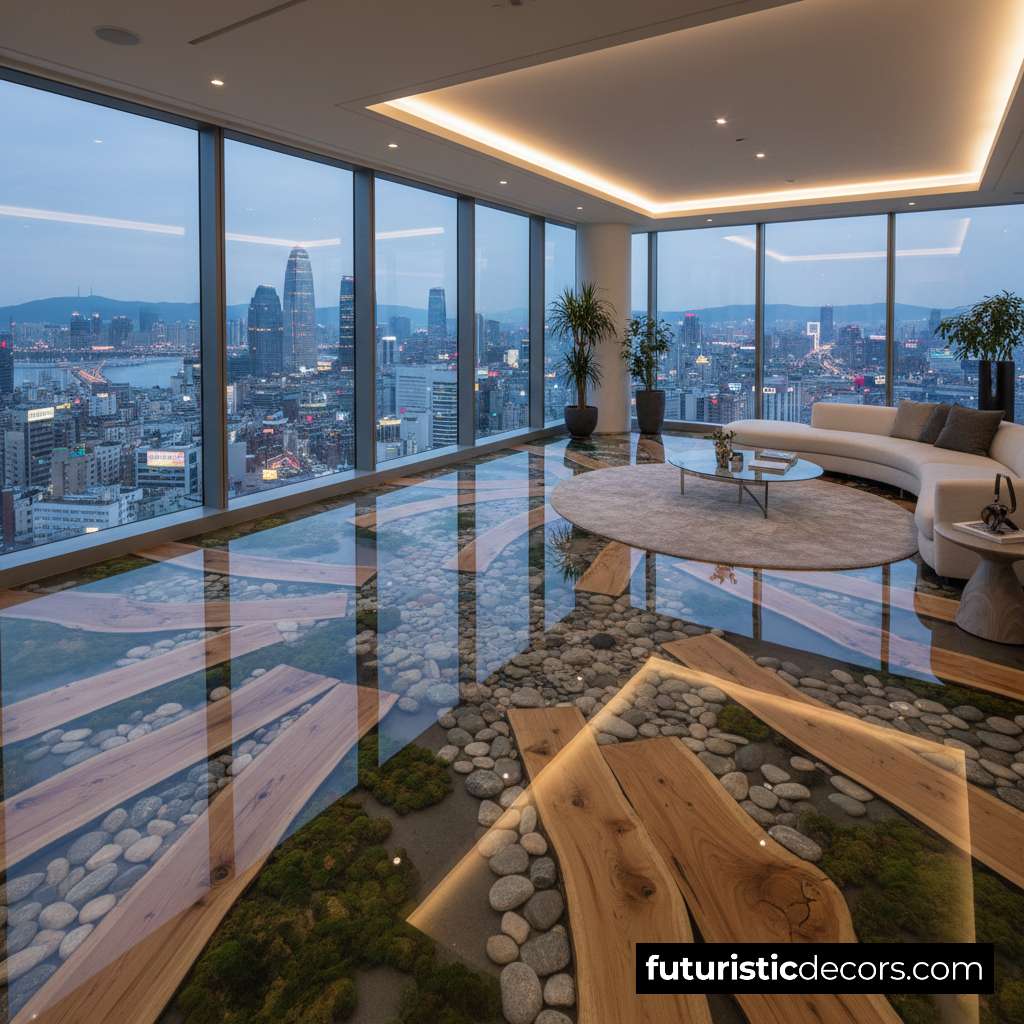In the ever-evolving landscape of interior design, the fusion of functionality and aesthetics has become paramount. Among the myriad of innovations that have redefined our living spaces, Wave Beds stand out as a quintessential example of this harmonious blend. These avant-garde pieces transcend the conventional boundaries of furniture, emerging as sculptural masterpieces that not only serve a practical purpose but also elevate the ambiance of any room. This article delves deep into the phenomenon of Wave Beds, exploring how they blur the line between art and furniture design, their historical context, design philosophy, materials, cultural significance, and their impact on contemporary living spaces.
Introduction: The Genesis of Wave Beds
The concept of the bed, one of the most fundamental pieces of furniture, has undergone significant transformations throughout history. From the ornate canopies of the Victorian era to the minimalist platforms of modern times, beds have always reflected the prevailing artistic and cultural trends. The advent of Wave Beds marks a revolutionary departure from traditional designs, embodying fluidity, motion, and organic forms that resonate with the principles of both art and functional design.
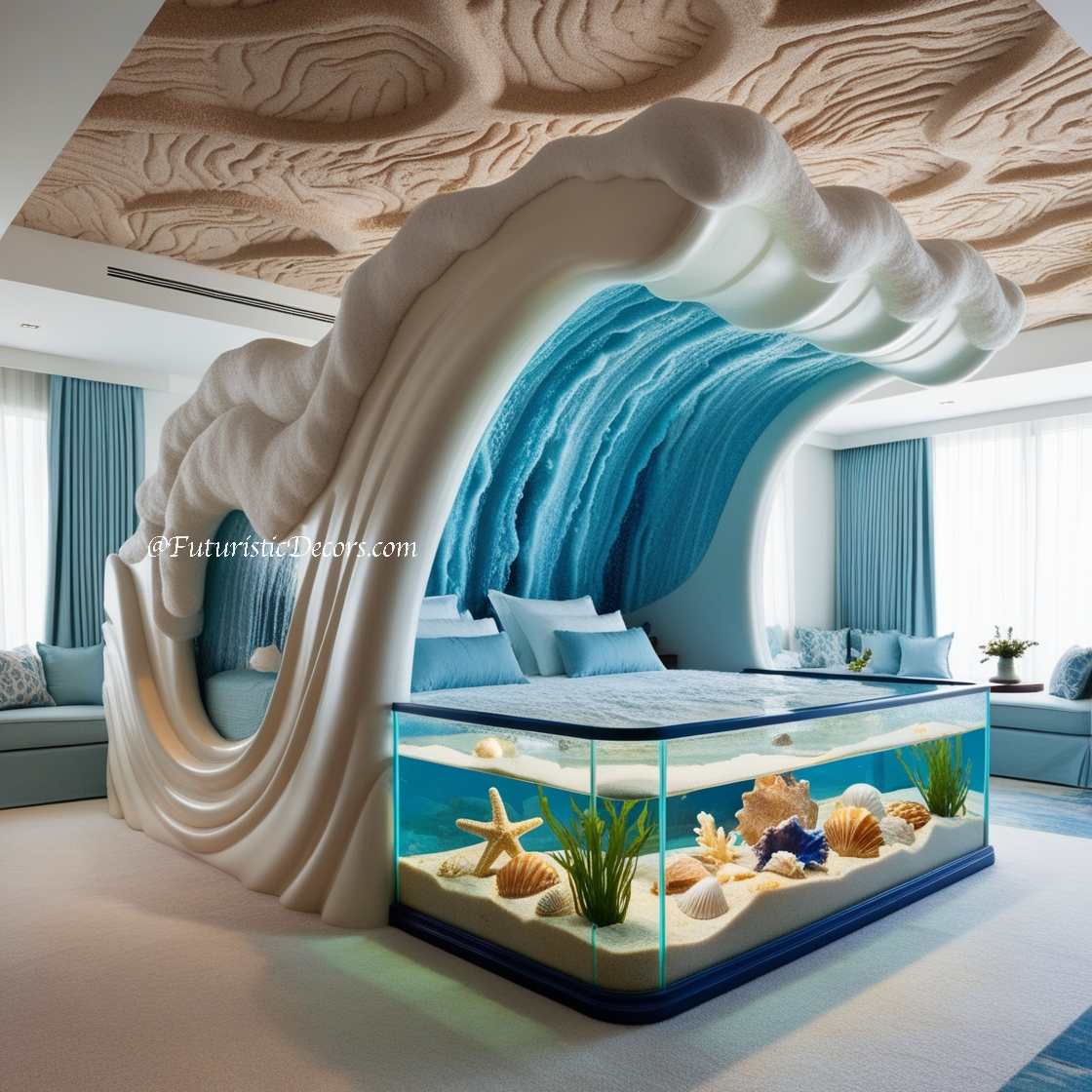
Wave Beds are not merely places to rest; they are statement pieces that capture attention and evoke emotion. Their undulating forms and dynamic aesthetics challenge the conventional perception of furniture, positioning themselves as integral elements of interior art. This blurring of lines between art and furniture design is a testament to the innovative spirit of contemporary designers who seek to redefine the essence of living spaces.
The Artistic Influence Behind Wave Beds
Art has always been a source of inspiration for furniture designers, providing a rich tapestry of forms, colors, and textures to draw from. Wave Beds are a prime example of this influence, borrowing the fluidity and grace of natural elements such as water, sand dunes, and rolling hills. The sinuous lines and curvilinear shapes of these beds echo the organic forms found in various art movements, from Art Nouveau’s emphasis on natural forms to the abstract expressions of modern art.
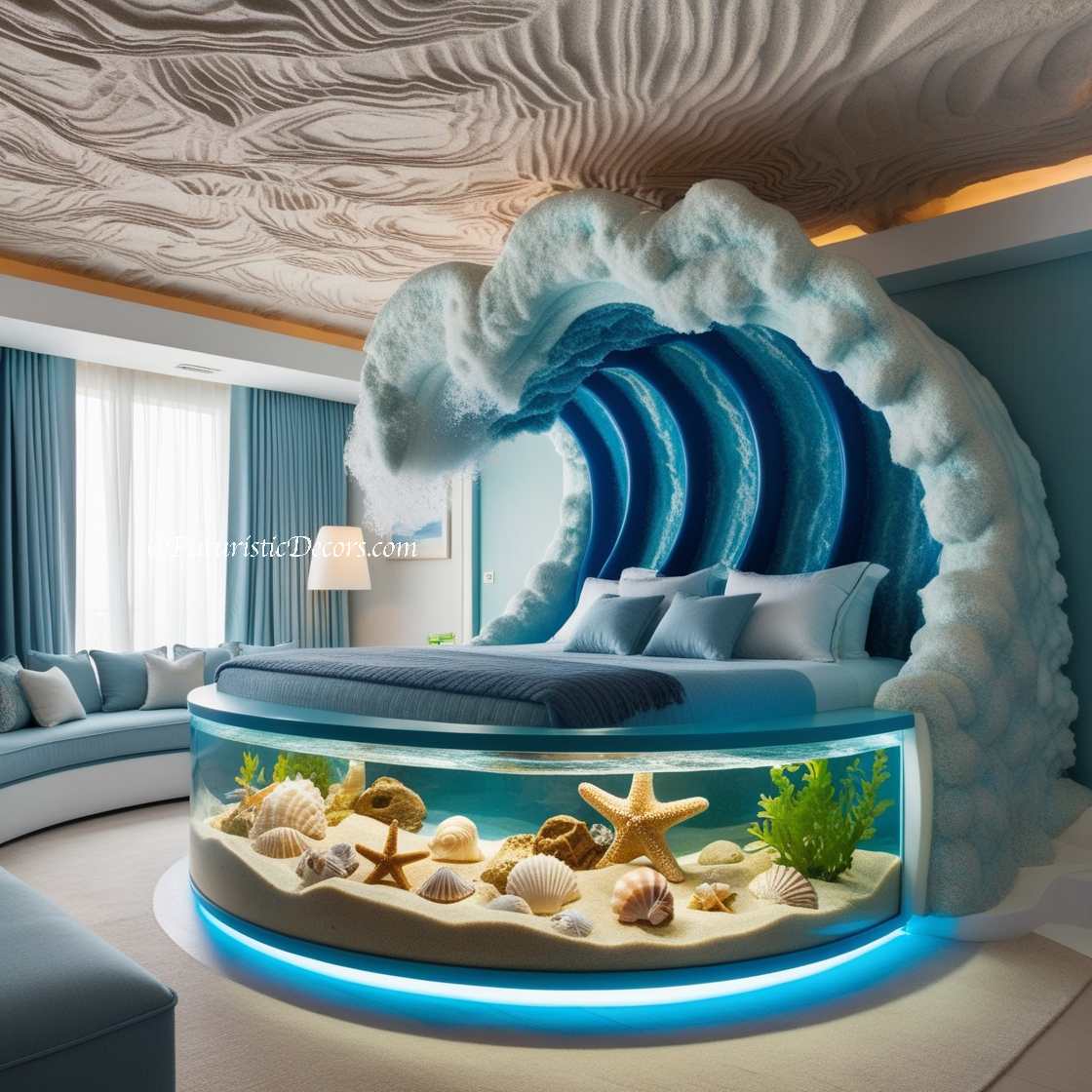
Art Movements and Wave Beds
Several art movements have significantly influenced the design of Wave Beds:
- Art Nouveau: Characterized by its use of long, sinuous lines and natural forms, Art Nouveau has left an indelible mark on the design of Wave Beds. The emphasis on organic shapes and intricate details is mirrored in the fluid contours and elaborate craftsmanship of these beds.
- Modernism: The minimalist ethos of Modernism, with its focus on simplicity and functionality, also plays a role in the design of Wave Beds. By stripping away unnecessary elements, designers can highlight the beauty of form and the interplay of light and shadow on the bed’s surfaces.
- Abstract Expressionism: The dynamic and emotive nature of Abstract Expressionism inspires the bold, sweeping lines and vibrant colors often found in Wave Beds. This movement encourages designers to infuse their creations with energy and personality, making each bed a unique work of art.
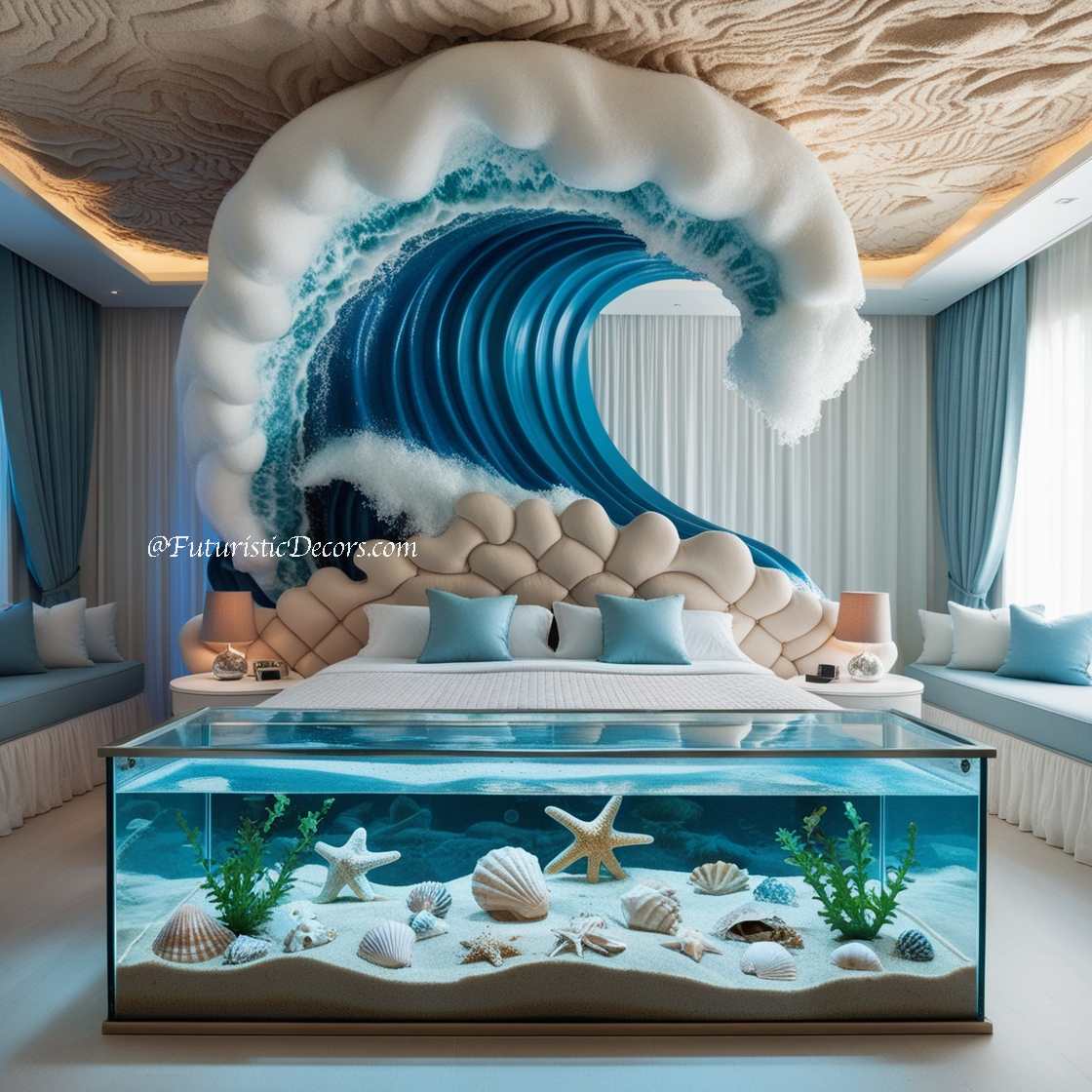
Sculptural Elements
Wave Beds often incorporate sculptural elements that enhance their artistic appeal. These can include intricate carvings, embedded lighting, or integrated artwork that complements the bed’s form. By integrating these elements, designers transform the bed from a simple piece of furniture into a focal point that defines the room’s aesthetic.
Design Philosophy: Function Meets Form
At the heart of Wave Beds lies a sophisticated design philosophy that seamlessly marries functionality with artistic expression. This philosophy prioritizes comfort and usability without compromising on visual appeal, ensuring that the bed serves its primary purpose while also contributing to the room’s overall design narrative.
Ergonomics and Comfort
Despite their striking appearance, Wave Beds are meticulously designed with ergonomics in mind. The undulating forms are not just for show; they are crafted to provide optimal support and comfort. The curvature of the bed accommodates the natural contours of the body, promoting better sleep posture and enhancing overall restfulness.
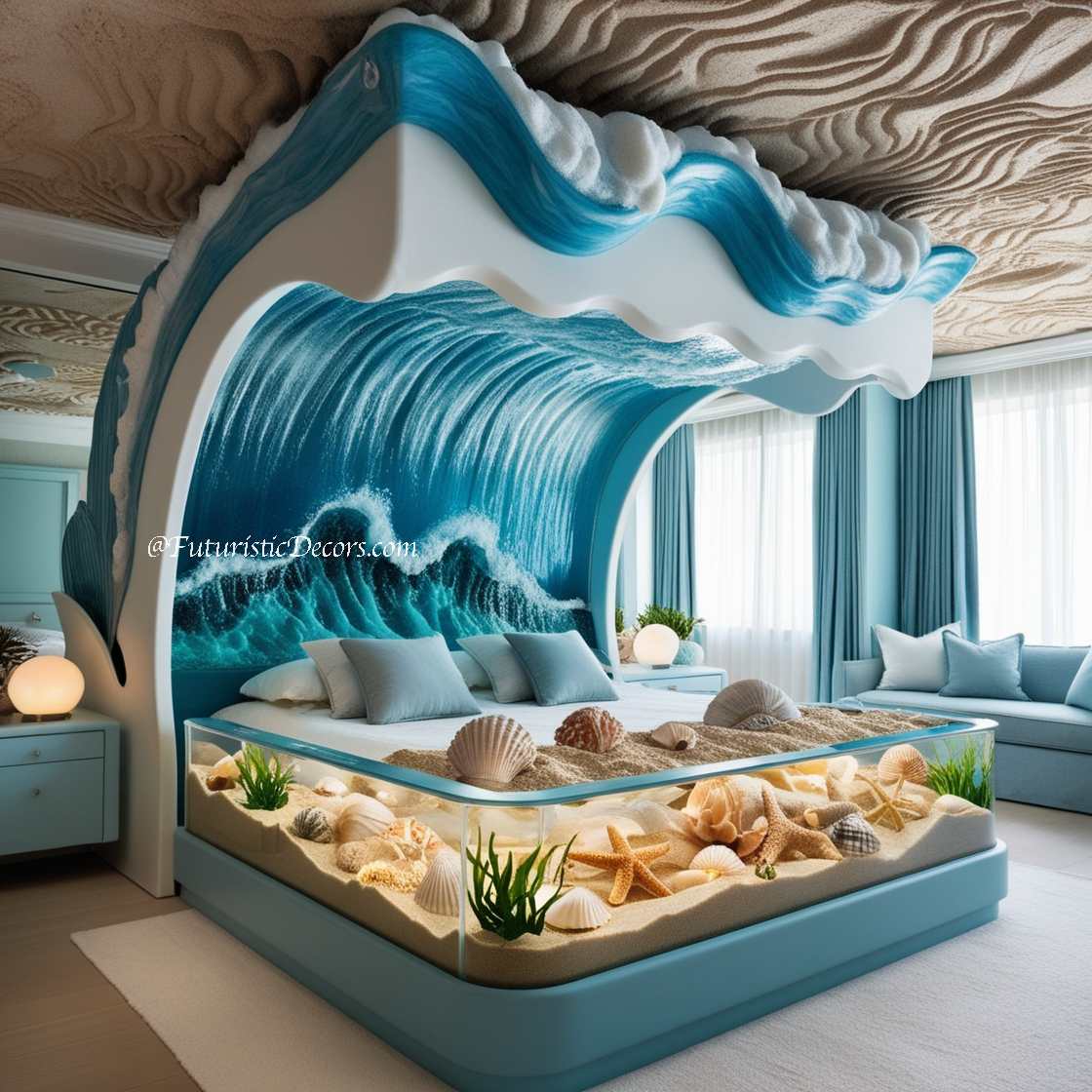
Versatility in Design
Wave Beds are remarkably versatile, fitting into a wide range of interior styles from contemporary and minimalist to eclectic and bohemian. Their dynamic shapes and diverse materials allow them to complement various color schemes and design themes, making them adaptable to different spatial contexts.
Integration with Technology
In the era of smart homes, Wave Beds are also embracing technological advancements. Features such as built-in lighting, adjustable firmness controls, and integrated storage solutions are becoming commonplace, enhancing the bed’s functionality while maintaining its artistic integrity.
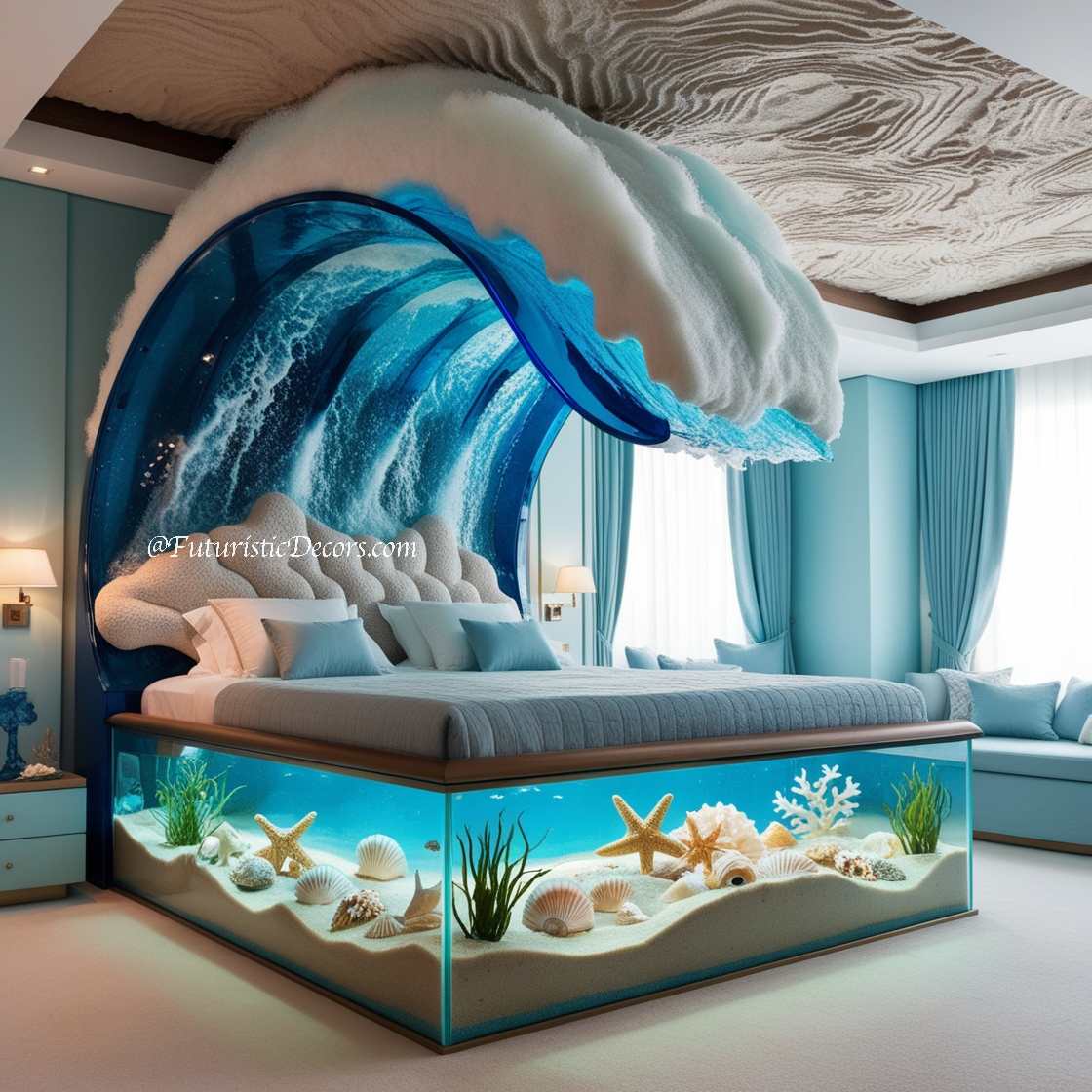
Materials and Craftsmanship
The choice of materials and the level of craftsmanship are pivotal in defining the aesthetic and structural integrity of Wave Beds. Designers employ a diverse array of materials, each contributing to the bed’s unique appearance and tactile experience.
Wood
Wood is a favored material for Wave Beds due to its versatility and warmth. Whether it’s the sleekness of maple, the richness of walnut, or the exotic allure of teak, wood provides a robust framework that can be sculpted into the bed’s signature curves. The natural grain patterns add depth and character, making each bed a unique piece.
Metal
Metal accents and frameworks lend a contemporary edge to Wave Beds. Stainless steel, brass, and aluminum are commonly used to create sleek lines and structural support, enhancing the bed’s modern aesthetic. Metal can also be intricately molded to form decorative elements that elevate the bed’s artistic appeal.
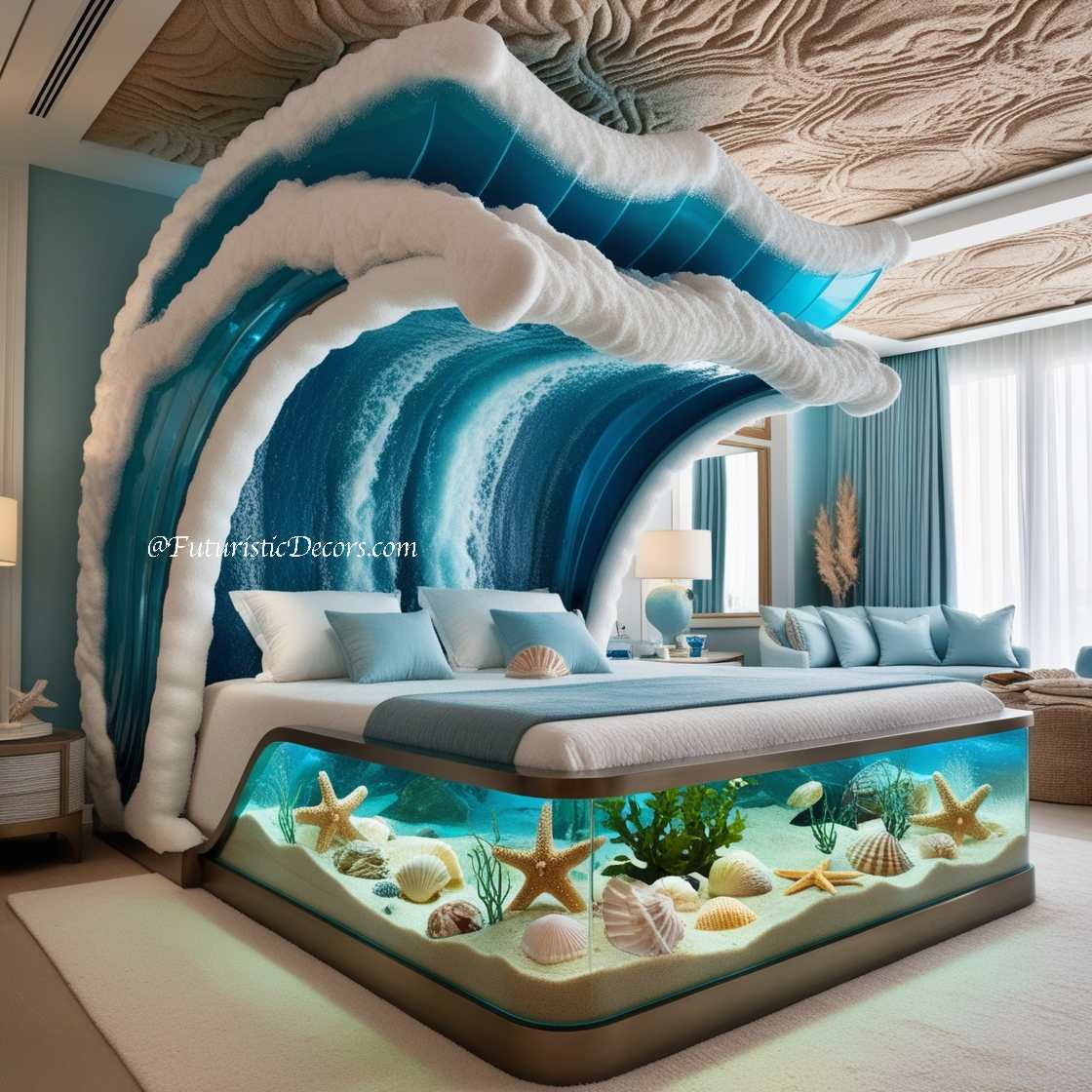
Upholstery and Fabrics
The choice of upholstery plays a crucial role in the overall look and feel of Wave Beds. Luxurious fabrics such as velvet, linen, and leather are often used to upholster the bed, providing comfort and adding a tactile dimension to the design. Bold colors and patterns can be employed to make a statement, while neutral tones offer a more subdued elegance.
Sustainable Materials
With growing environmental consciousness, many designers are incorporating sustainable materials into Wave Beds. Reclaimed wood, recycled metals, and eco-friendly fabrics not only reduce the environmental footprint but also add a unique narrative to each piece, emphasizing the importance of sustainability in modern design.
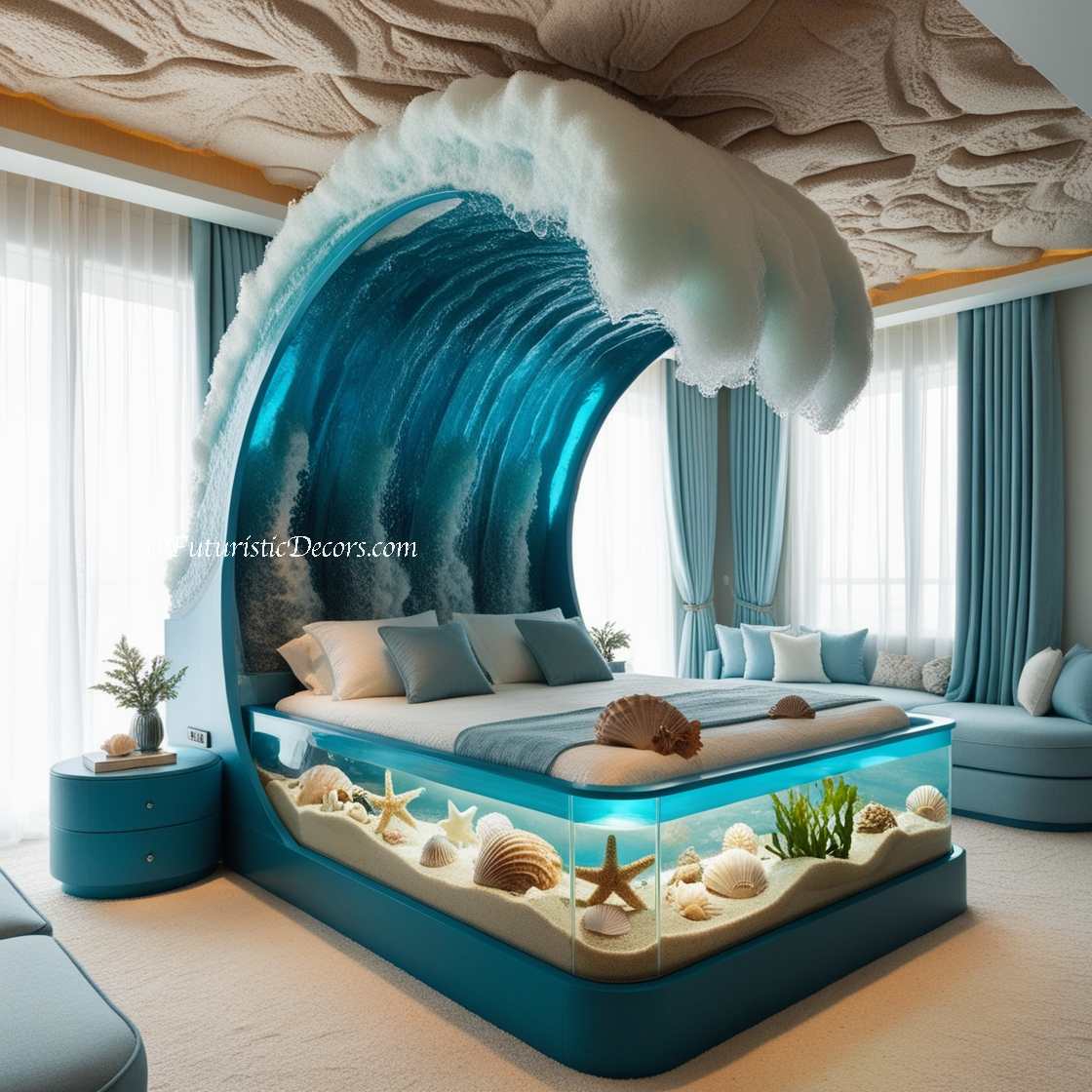
Craftsmanship and Detailing
The intricate detailing and high level of craftsmanship distinguish Wave Beds from ordinary furniture. Handcrafted elements, precision in shaping and joining materials, and attention to detail in finishes ensure that each bed is a masterpiece in its own right. The seamless integration of artistic elements with functional design is a hallmark of exceptional Wave Beds.
Cultural Significance and Trends
Wave Beds reflect broader cultural trends and societal shifts, serving as indicators of changing tastes and values in interior design. Their rise in popularity is intertwined with movements towards individualism, self-expression, and the desire for personalized living spaces.
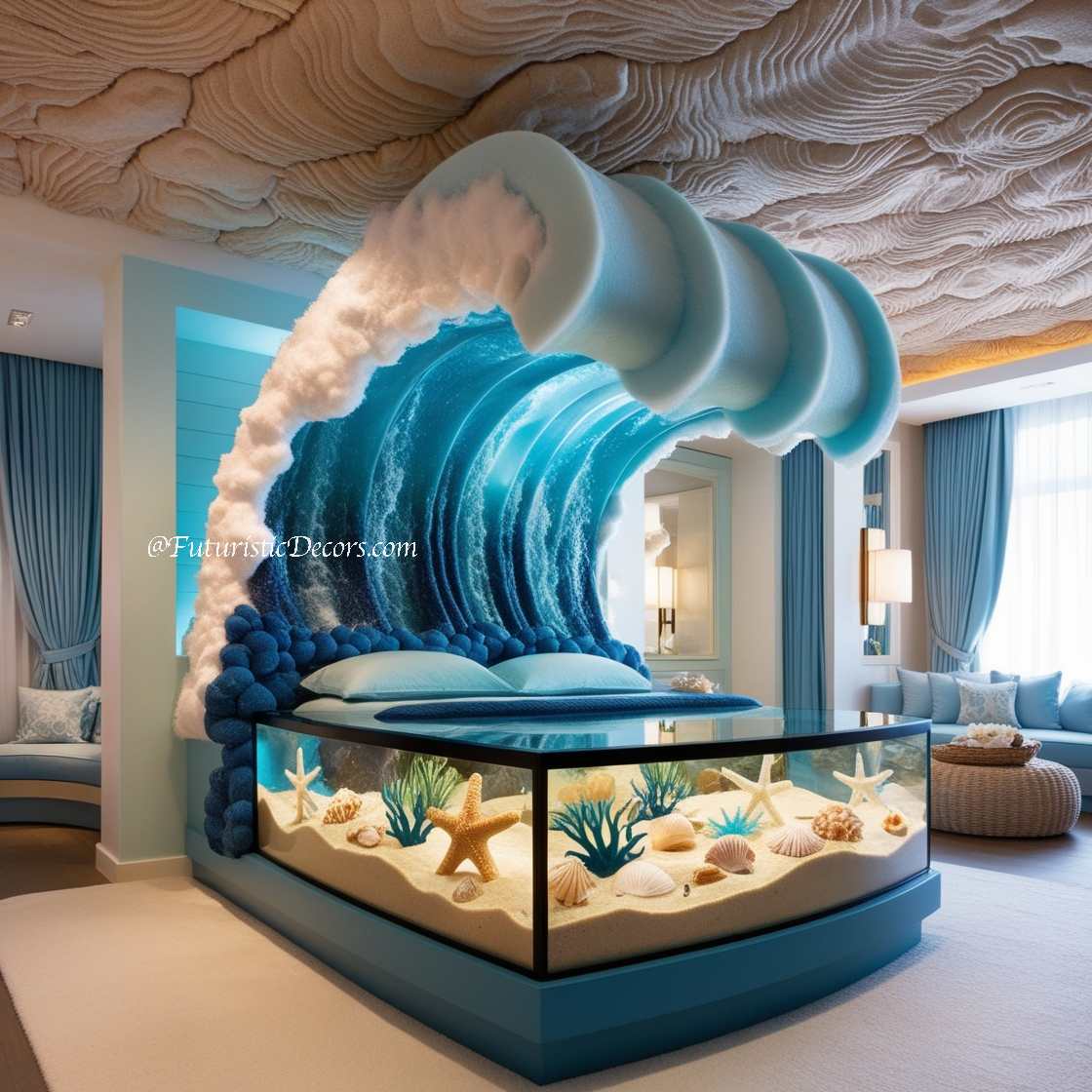
Individualism and Self-Expression
In an age where personal identity and self-expression are highly valued, Wave Beds offer a canvas for individuality. Their unique designs allow homeowners to showcase their personal style and artistic inclinations, making the bed not just a functional item but a statement of who they are.
Minimalism and Maximalism
Wave Beds can effortlessly bridge the gap between minimalism and maximalism. In minimalist interiors, their clean lines and fluid forms add subtle elegance without overwhelming the space. Conversely, in maximalist settings, they serve as bold focal points that anchor the room’s eclectic decor.
Wellness and Mindfulness
The emphasis on wellness and mindfulness in contemporary culture has influenced the design of Wave Beds. By prioritizing comfort, ergonomics, and soothing aesthetics, these beds contribute to creating restful and harmonious environments that support mental and physical well-being.

Global Influences
Globalization has facilitated the cross-pollination of design ideas, leading to the incorporation of diverse cultural motifs and techniques in Wave Beds. Elements inspired by Scandinavian simplicity, Japanese minimalism, or Moroccan intricacy can be seen, adding a rich tapestry of influences that enhance the bed’s universal appeal.
Wave Beds in Contemporary Interiors
The integration of Wave Beds into contemporary interiors offers a myriad of possibilities for creating dynamic and visually engaging spaces. Whether in residential homes, boutique hotels, or creative workspaces, these beds serve as central elements that define and elevate the surrounding environment.
Residential Spaces
In residential settings, Wave Beds can transform bedrooms into luxurious sanctuaries. Their sculptural forms complement various decor styles, from modern chic to bohemian eclectic, providing both comfort and aesthetic allure. The bed becomes the room’s centerpiece, setting the tone for the entire space.

Hospitality Industry
Boutique hotels and upscale accommodations increasingly feature Wave Beds to offer guests a unique and memorable experience. The artistic design of these beds adds a touch of sophistication and exclusivity, enhancing the overall ambiance and appeal of the establishment.
Creative and Collaborative Spaces
In creative and collaborative environments, Wave Beds can function as unconventional seating or relaxation areas. Their inviting forms encourage relaxation and creativity, fostering an atmosphere conducive to innovation and collaboration.
Public and Commercial Spaces
Public spaces such as lounges, waiting areas, and upscale retail stores can incorporate Wave Beds to create inviting and luxurious atmospheres. Their striking presence serves as a conversation starter and elevates the aesthetic quality of the space.
The Future of Wave Beds: Innovation and Sustainability
As design continues to evolve, Wave Beds are poised to embrace further innovations and sustainability practices, ensuring their relevance and appeal in the years to come.
Technological Advancements
Future iterations of Wave Beds are likely to integrate more advanced technologies, such as smart home connectivity, adjustable firmness mechanisms, and personalized comfort settings. These enhancements will further bridge the gap between functionality and luxury, offering users an unparalleled sleeping experience.
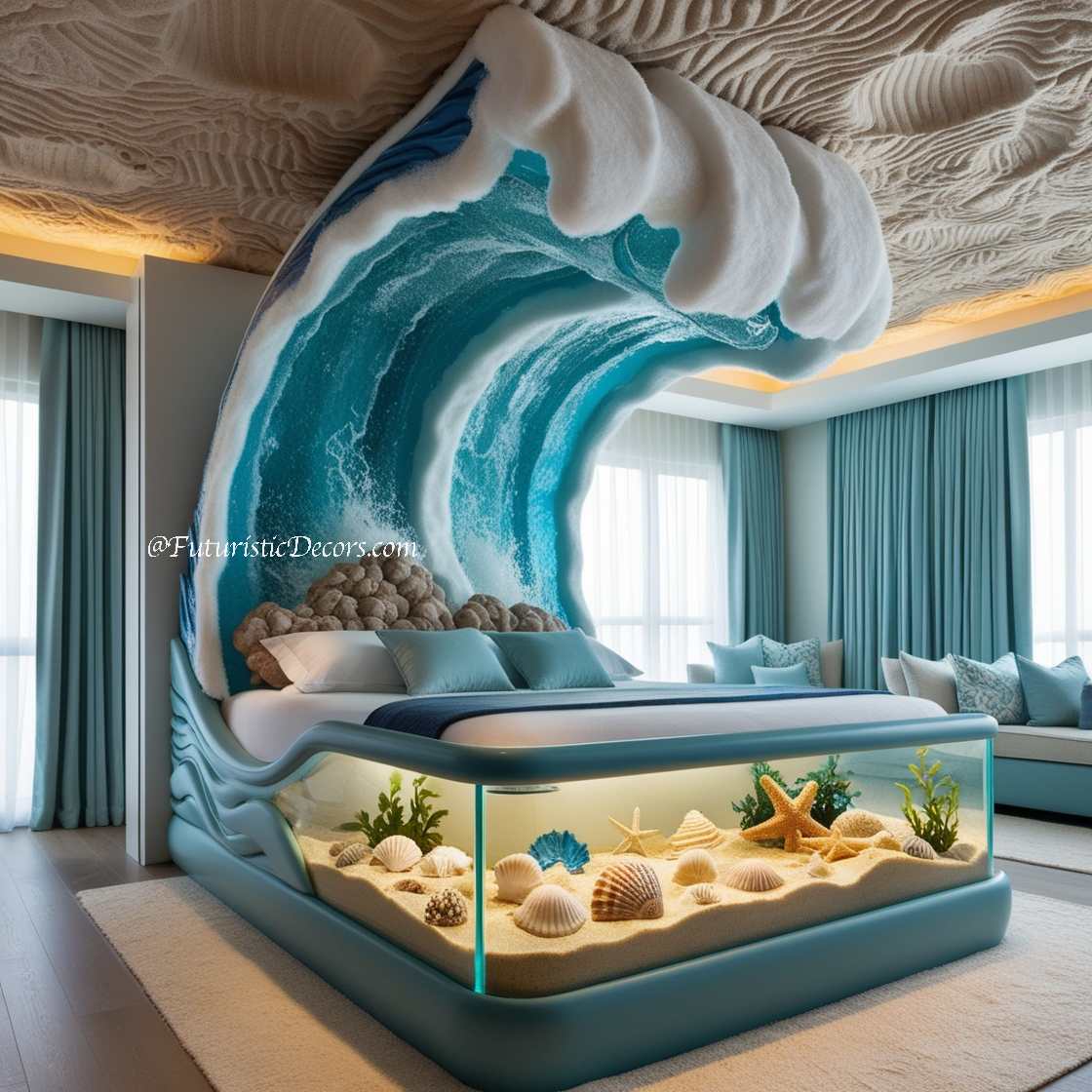
Sustainable Design Practices
Sustainability will remain a key focus in the future of Wave Beds. Designers will continue to explore eco-friendly materials, ethical production methods, and innovative recycling techniques to minimize environmental impact. This commitment to sustainability not only aligns with global environmental goals but also appeals to the growing segment of environmentally conscious consumers.
Customization and Personalization
Advancements in manufacturing technologies, such as 3D printing and modular design, will enable greater customization and personalization of Wave Beds. Consumers will have the ability to tailor their beds to their specific preferences, from shape and size to color and materials, ensuring a perfect fit for their unique spaces and tastes.
Integration with Wellness Trends
As the wellness movement gains momentum, Wave Beds will increasingly incorporate features that promote health and well-being. This could include integrated sleep tracking systems, materials with therapeutic benefits, and designs that enhance relaxation and stress reduction.
Case Studies: Exemplary Wave Beds Designs
To illustrate the diversity and ingenuity of Wave Beds, let us explore some exemplary designs that have made significant impacts in the realm of art and furniture.
The Fluid Form Bed by Design Studio X
Design Studio X’s Fluid Form Bed is a masterclass in sculptural furniture design. Crafted from sustainably sourced walnut wood, the bed features a series of undulating curves that create a sense of movement and flow. The seamless integration of the headboard and footboard with the bed’s base exemplifies the harmony between art and functionality, making it a standout piece in any modern bedroom.
Lumina Wave Bed by Futurist Furniture
Futurist Furniture’s Lumina Wave Bed incorporates embedded LED lighting within its sleek metal framework. The dynamic lighting system can be customized to display a spectrum of colors, allowing users to create ambient lighting effects that enhance the room’s mood. The interplay of light and shadow on the bed’s curves transforms it into a luminous work of art, perfect for contemporary living spaces.
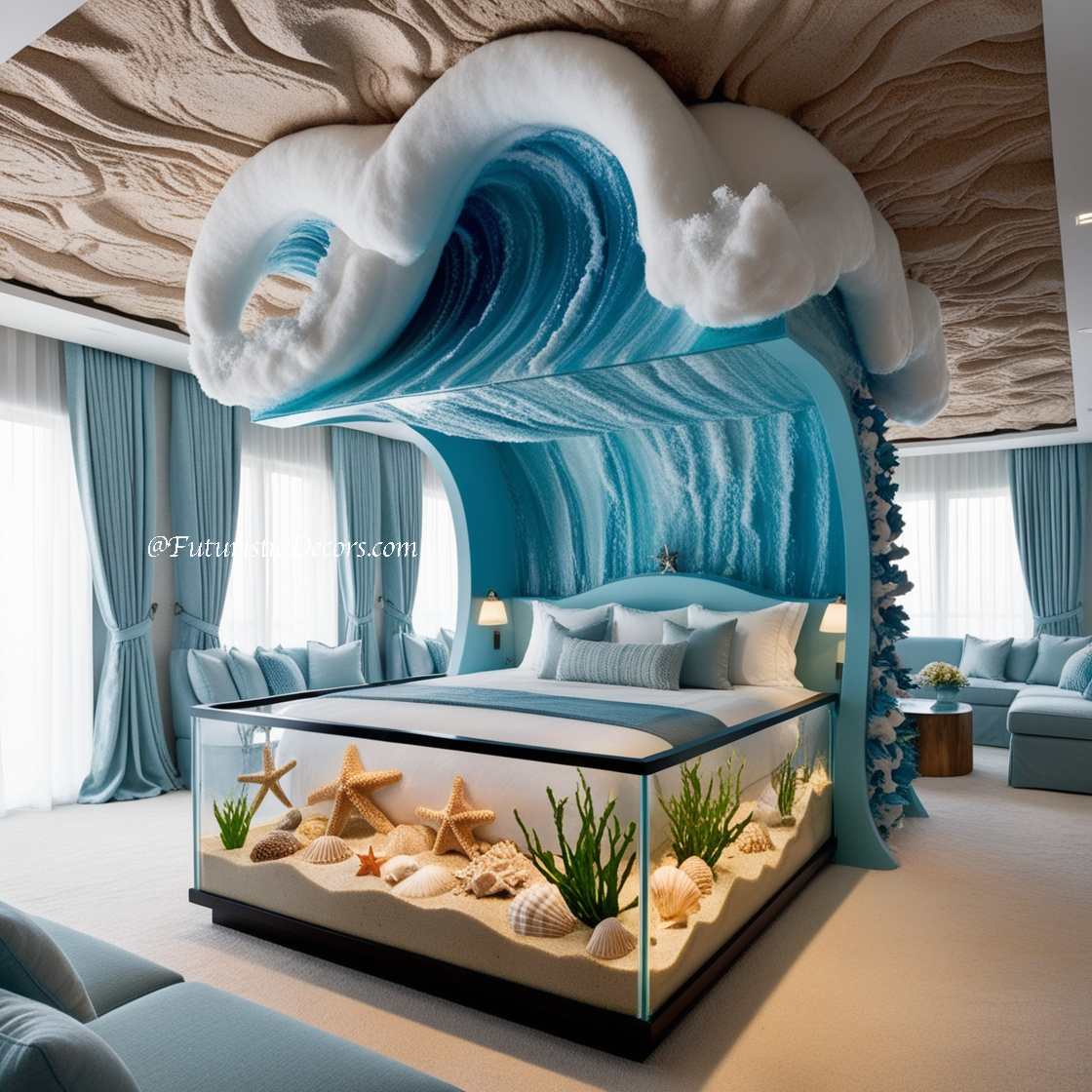
Ebb and Flow Bed by Artisan Interiors
Artisan Interiors’ Ebb and Flow Bed is upholstered in handwoven organic cotton fabric, available in a variety of colors and patterns inspired by natural landscapes. The bed’s gently curved frame provides ergonomic support, while the textured upholstery adds a tactile dimension that invites touch. This design exemplifies the balance between comfort and artistic expression, making it a versatile addition to diverse interior styles.
Infinity Wave Bed by Urban Living
Urban Living’s Infinity Wave Bed features a modular design that allows for endless configurations and arrangements. The bed’s flowing lines and interconnected segments create a sense of continuity and expansion, making it ideal for both small and large spaces. The Infinity Wave Bed’s adaptability and aesthetic appeal make it a popular choice among urban dwellers seeking stylish and functional furniture solutions.
Designing Your Own Wave Bed
For those inspired by the allure of Wave Beds and eager to incorporate this artistic furniture piece into their homes, designing your own bed can be a rewarding endeavor. Here are some key considerations and steps to guide you through the process.
Conceptualization and Inspiration
Begin by gathering inspiration from various sources such as nature, art, and architectural forms. Consider the mood and atmosphere you wish to create in your bedroom. Sketching preliminary designs can help visualize the bed’s form and identify key elements that resonate with your vision.
Material Selection
Choose materials that align with your design goals and sustainability preferences. Whether opting for the warmth of wood, the sleekness of metal, or the comfort of high-quality upholstery, ensure that the materials not only enhance the bed’s aesthetic but also contribute to its durability and functionality.
Ergonomic Design
Prioritize ergonomics to ensure that your Wave Bed provides optimal comfort and support. Pay attention to the curvature of the bed, the height of the mattress platform, and the integration of supportive elements such as headboards and footboards.
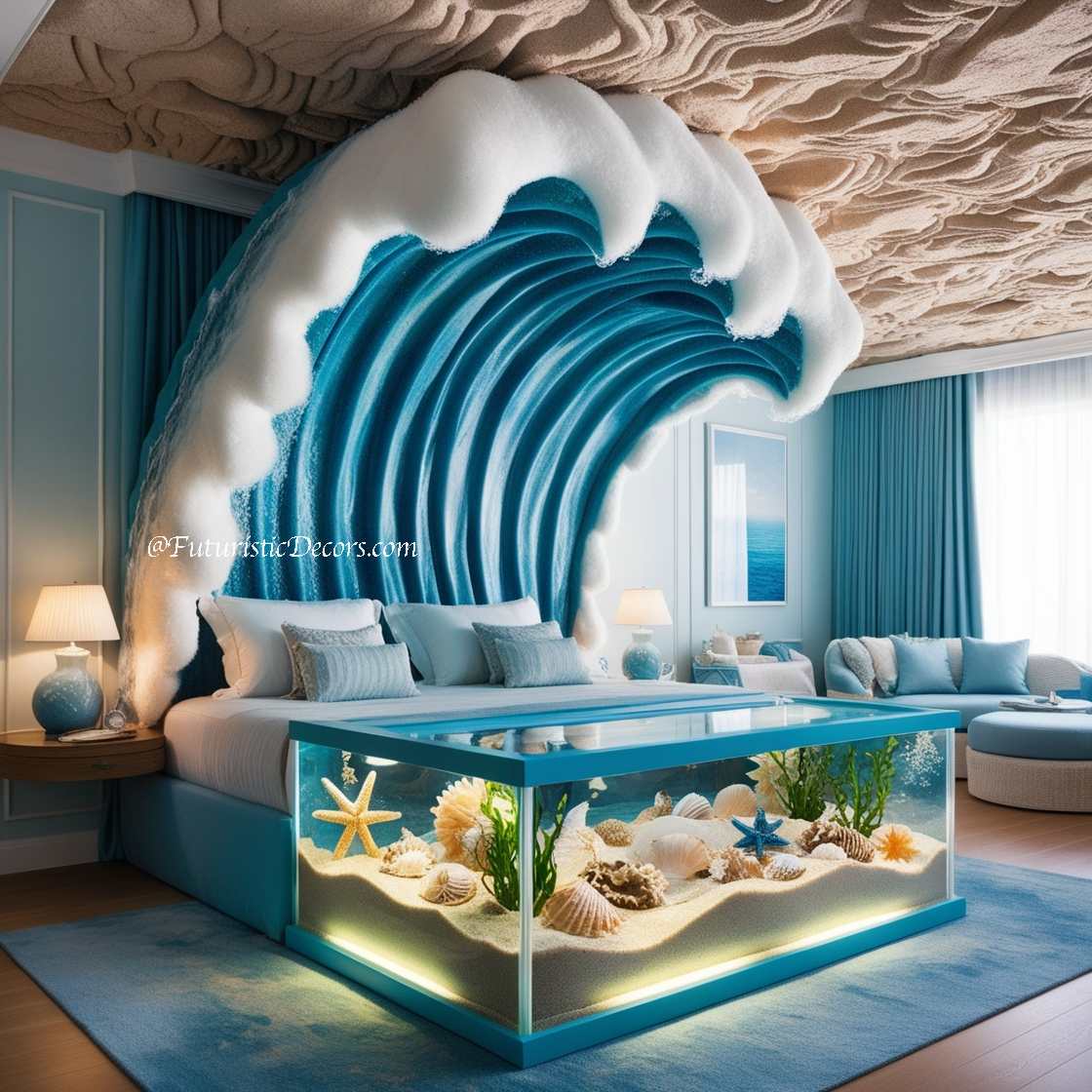
Structural Integrity
Collaborate with skilled craftsmen or utilize advanced manufacturing techniques to achieve the desired form while maintaining structural integrity. Ensuring that the bed is both visually stunning and robust is essential for its longevity and usability.
Customization and Personalization
Incorporate customizable elements such as adjustable lighting, integrated storage, or personalized upholstery to tailor the bed to your specific needs and preferences. Personalization adds a unique touch that makes the bed a true reflection of your individual style.
Prototyping and Refinement
Develop prototypes to test the design’s practicality and aesthetic appeal. Gather feedback and make necessary refinements to ensure that the final product meets your expectations and design objectives.
Final Production and Finishing
Once the design is perfected, proceed with the final production, paying close attention to finishing details such as paint, stain, and upholstery. High-quality finishes enhance the bed’s visual appeal and contribute to its overall elegance.
The Intersection of Wave Beds and Sustainability
In today’s environmentally conscious world, the sustainability of furniture design is a critical consideration. Wave Beds are increasingly being designed with sustainability in mind, reflecting a commitment to eco-friendly practices and materials.
Sustainable Material Choices
Designers are opting for materials that have a minimal environmental impact. Reclaimed wood, recycled metals, and organic fabrics are commonly used to create Wave Beds that are both beautiful and sustainable. These materials not only reduce waste but also add a unique character to each piece.
Eco-Friendly Production Processes
Sustainable production processes involve minimizing energy consumption, reducing waste, and ensuring fair labor practices. Many manufacturers of Wave Beds are adopting eco-friendly techniques such as low-VOC finishes, water-based adhesives, and energy-efficient manufacturing equipment to lower their environmental footprint.
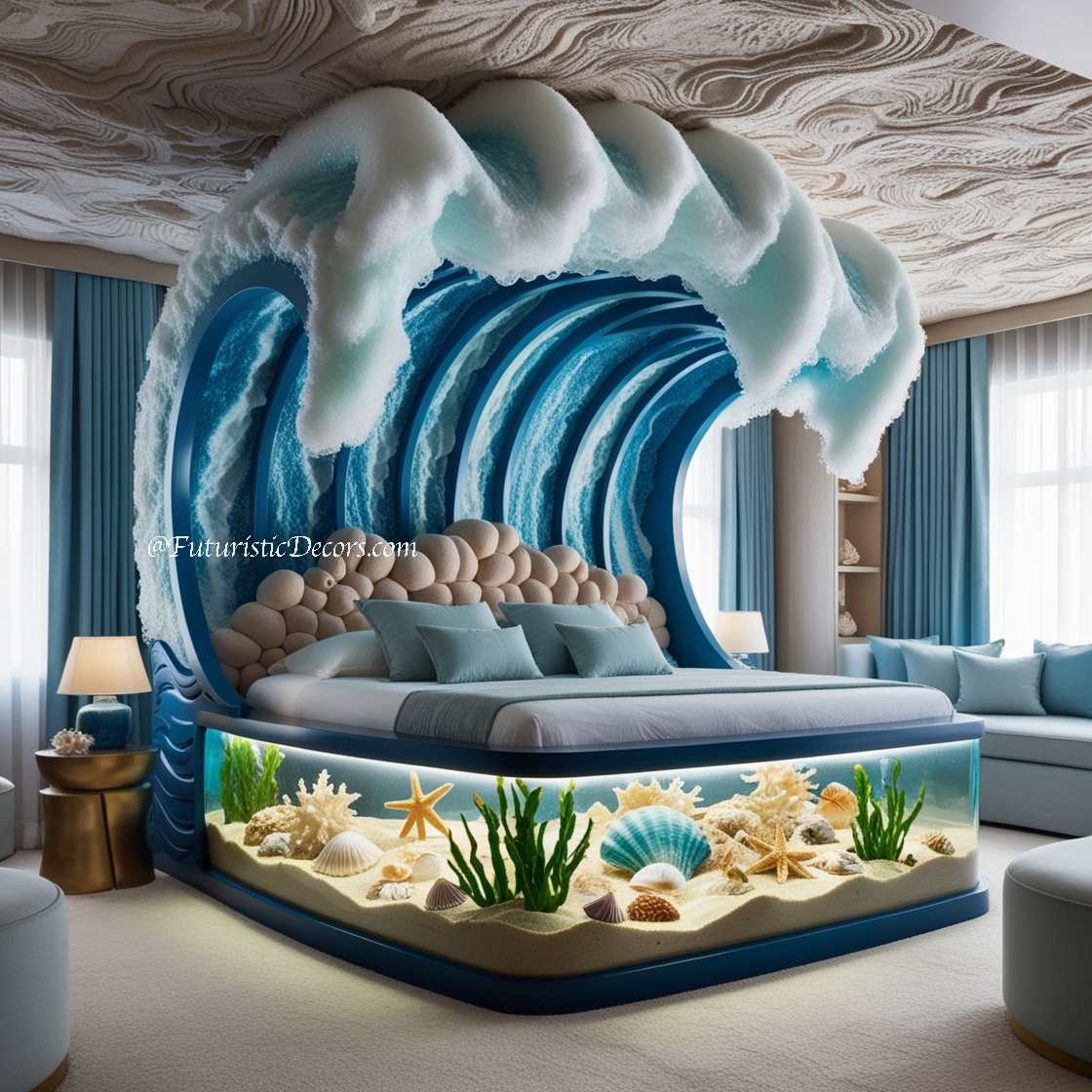
Longevity and Durability
A key aspect of sustainability is the creation of long-lasting furniture. Wave Beds are designed to withstand the test of time, both in terms of style and structural integrity. High-quality materials and meticulous craftsmanship ensure that these beds remain functional and aesthetically pleasing for years to come, reducing the need for frequent replacements.
Recycling and Upcycling
At the end of their lifecycle, Wave Beds can be recycled or upcycled, further contributing to sustainability. Designers are exploring innovative ways to repurpose materials and components, giving old beds new life and minimizing environmental impact.
The Psychological Impact of Wave Beds
The design and aesthetics of furniture significantly influence the psychological well-being of individuals. Wave Beds, with their flowing lines and organic forms, have a profound psychological impact, fostering a sense of calm, relaxation, and harmony within living spaces.
Promoting Relaxation and Tranquility
The gentle curves and soft contours of Wave Beds create a soothing visual environment that promotes relaxation. The absence of harsh lines and rigid structures allows the mind to unwind, contributing to a peaceful and restful atmosphere conducive to better sleep.
Enhancing Mood and Well-Being
The artistic design of Wave Beds can enhance mood and overall well-being. Vibrant colors and dynamic forms stimulate positive emotions, while the harmonious shapes foster a sense of balance and contentment. This psychological uplift can have a lasting impact on the inhabitants of the space.
Creating a Sense of Flow and Continuity
Wave Beds embody the principle of flow, creating a sense of continuity and movement within the room. This fluidity can influence the overall energy of the space, making it feel more open, connected, and harmonious. The seamless integration of the bed with its surroundings enhances the spatial dynamics, contributing to a cohesive and unified environment.
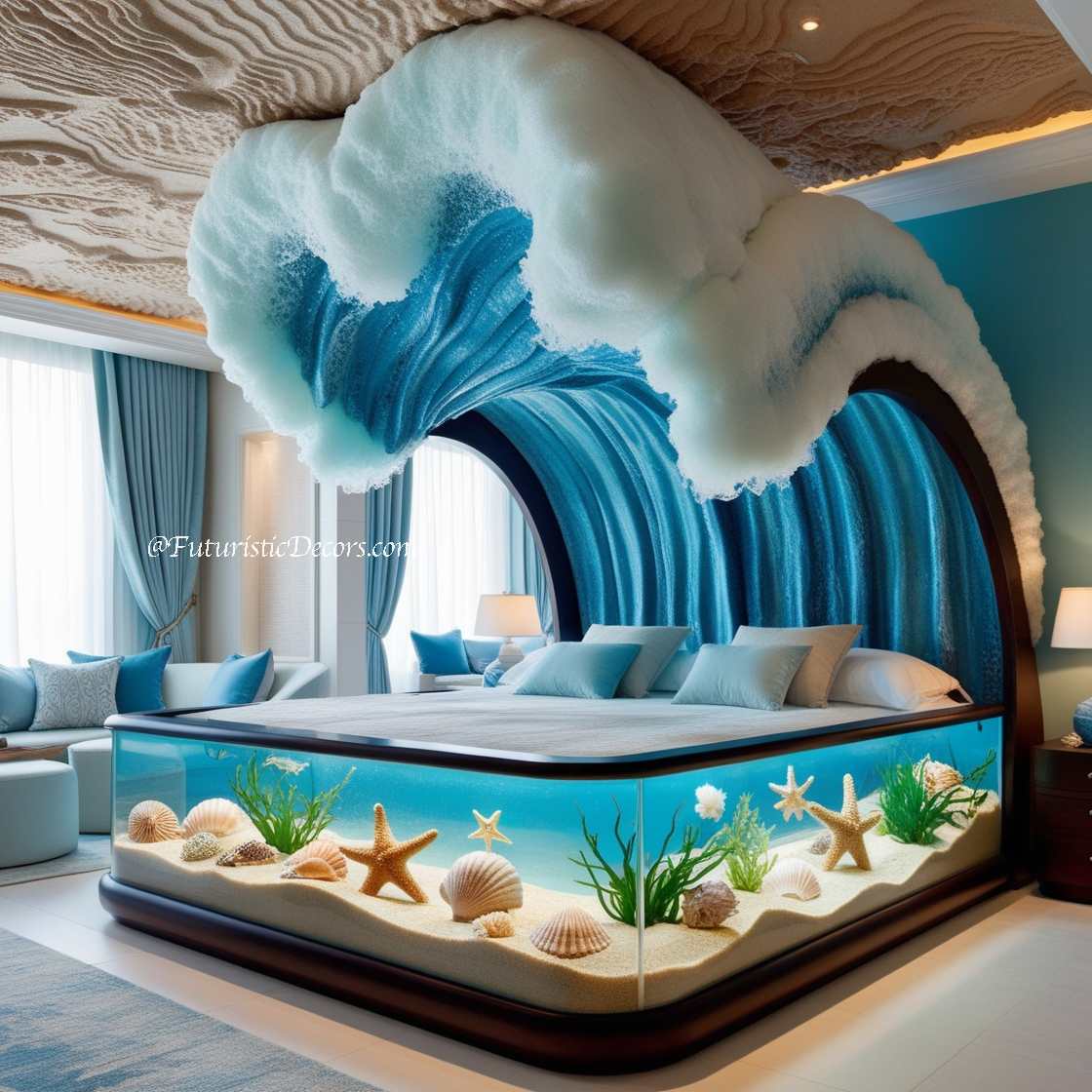
Personal Connection and Identity
Having a Wave Bed in one’s living space fosters a personal connection to the furniture piece. Its unique design becomes a reflection of the individual’s taste and personality, reinforcing their identity and creating a space that truly feels like home.
Frequently Asked Questions (FAQs) About Wave Beds
1. What Are Wave Beds and How Do They Differ from Traditional Beds?
Wave Beds are innovative furniture pieces that blend artistic design with functional comfort. Unlike traditional beds that typically feature straight lines and standard shapes, Wave Beds incorporate undulating forms and fluid contours inspired by natural elements such as water, sand dunes, and rolling hills. This unique design not only makes them visually striking but also enhances ergonomics by conforming to the body’s natural curves, providing superior support and comfort.
2. What Materials Are Commonly Used in the Construction of Wave Beds?
Wave Beds are crafted from a diverse range of materials to achieve their distinctive aesthetic and structural integrity. Commonly used materials include:
- Wood: Offers warmth and versatility, with options like walnut, maple, and teak being popular for their durability and beautiful grain patterns.
- Metal: Utilized for sleek lines and modern appeal, metals such as stainless steel, brass, and aluminum add a contemporary edge.
- Upholstery and Fabrics: High-quality fabrics like velvet, linen, and leather provide comfort and tactile appeal, available in various colors and patterns.
- Sustainable Materials: Increasingly, designers are incorporating eco-friendly materials such as reclaimed wood and recycled metals to promote sustainability.
The combination of these materials allows Wave Beds to serve as both functional furniture and artistic statement pieces.
3. How Do Wave Beds Enhance the Aesthetic of a Room?
Wave Beds act as focal points in any room due to their sculptural and dynamic designs. Their flowing lines and organic shapes add a sense of movement and elegance, transforming the bedroom into a sophisticated and inviting space. Additionally, Wave Beds can complement various interior styles—from minimalist and contemporary to eclectic and bohemian—thanks to their versatile design and customizable features. The integration of elements like embedded lighting, unique upholstery, and intricate detailing further enhances their visual appeal, making them standout pieces that elevate the overall ambiance of the room.
4. Are Wave Beds Comfortable and Ergonomically Designed?
Absolutely. Despite their artistic appearance, Wave Beds are meticulously designed with ergonomics and comfort as top priorities. The undulating forms are crafted to support the body’s natural contours, promoting proper sleep posture and reducing pressure points. Many Wave Beds feature adjustable firmness controls, integrated storage solutions, and high-quality mattresses tailored to enhance sleep quality. Additionally, the use of premium materials such as memory foam and supportive slats ensures that Wave Beds provide both aesthetic beauty and unparalleled comfort, making them ideal for restful and rejuvenating sleep.
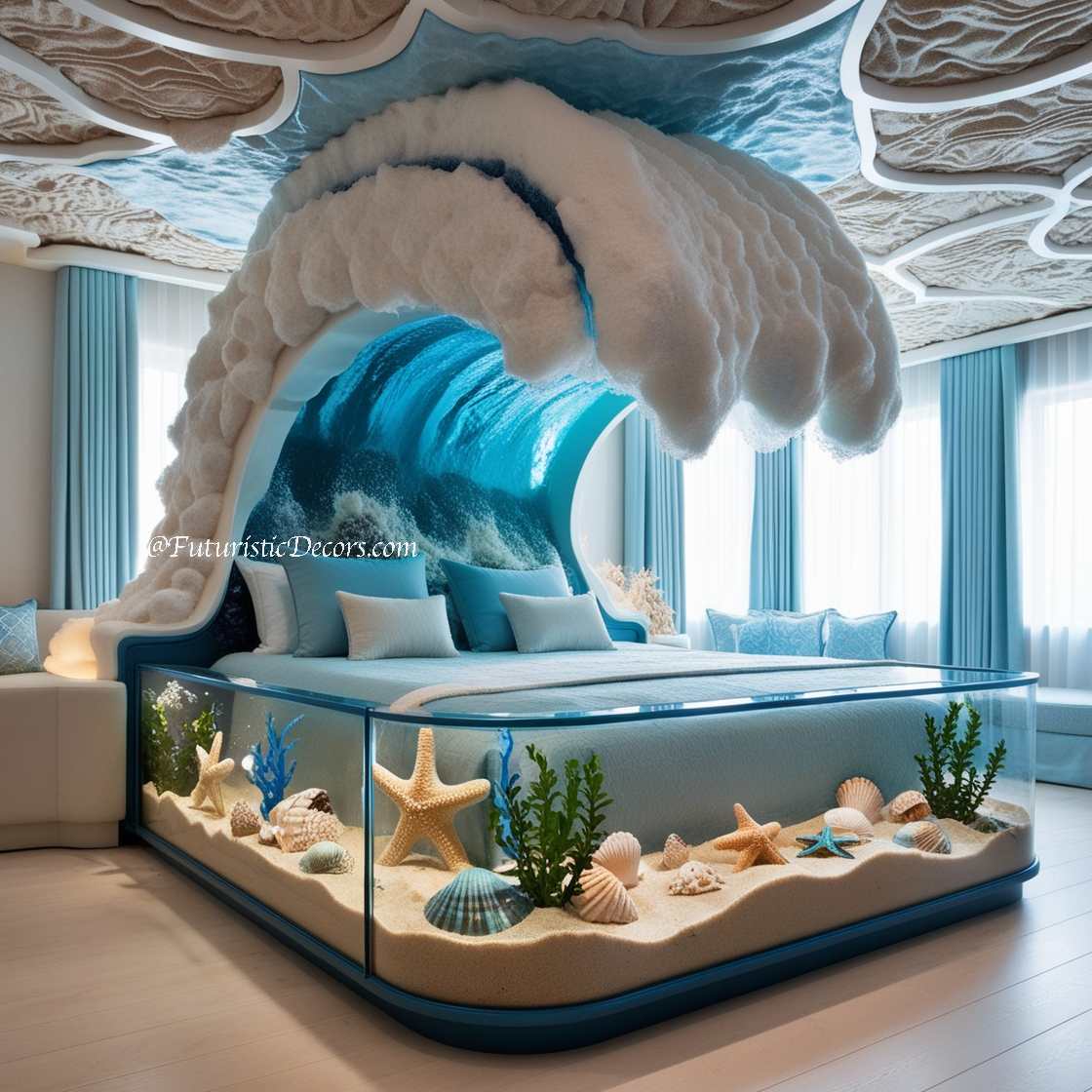
5. How Can I Customize a Wave Bed to Fit My Personal Style and Needs?
Customization is one of the key advantages of Wave Beds, allowing you to tailor the bed to your specific preferences and spatial requirements. Here are several ways to customize your Wave Bed:
- Material Selection: Choose from a variety of woods, metals, and upholstery fabrics to match your interior decor and personal taste.
- Color and Finish: Opt for colors and finishes that complement your room’s color scheme, whether you prefer bold hues or subtle neutrals.
- Size and Configuration: Wave Beds come in different sizes and can be designed to fit various room dimensions, including options for twin, queen, king, and custom sizes.
- Integrated Features: Add features such as built-in lighting, storage compartments, or smart technology integrations to enhance functionality.
- Design Elements: Incorporate personalized design elements like carvings, inlays, or unique shapes to make the bed truly one-of-a-kind.
By working with skilled designers or manufacturers, you can create a Wave Bed that not only meets your comfort and functional needs but also reflects your unique style and artistic vision.
Refer to similar product models: Click here
————–
Conclusion: The Future of Art in Furniture Design
Wave Beds epitomize the seamless integration of art and functionality in furniture design. By transcending traditional boundaries, they offer a new paradigm where furniture is not just a utilitarian object but a profound expression of artistic vision and cultural identity. As design continues to evolve, Wave Beds will undoubtedly remain at the forefront, inspiring future generations of designers to explore the endless possibilities that lie at the intersection of art and functional design.
In embracing Wave Beds, homeowners and designers alike are participating in a movement that celebrates creativity, individuality, and the transformative power of design. These beds are more than just places to sleep; they are embodiments of artistic expression, symbols of comfort, and testaments to the boundless potential of modern furniture design. As we look to the future, the continued innovation and sustainability of Wave Beds promise to further enrich our living spaces, ensuring that the line between art and furniture design remains beautifully blurred.
FuturisticDecors is dedicated to exploring the cutting-edge trends and timeless designs that shape our living environments. Stay tuned for more insights into the world of innovative interior design.


